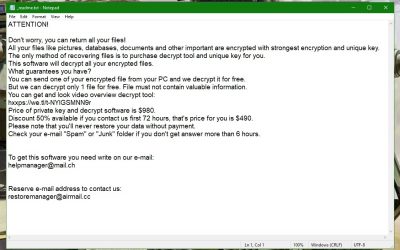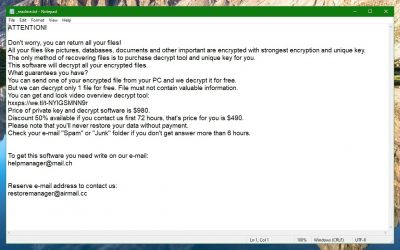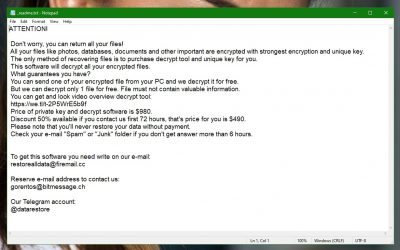Remove Gusau Virus Ransomware (+ .Gusau File Recovery)
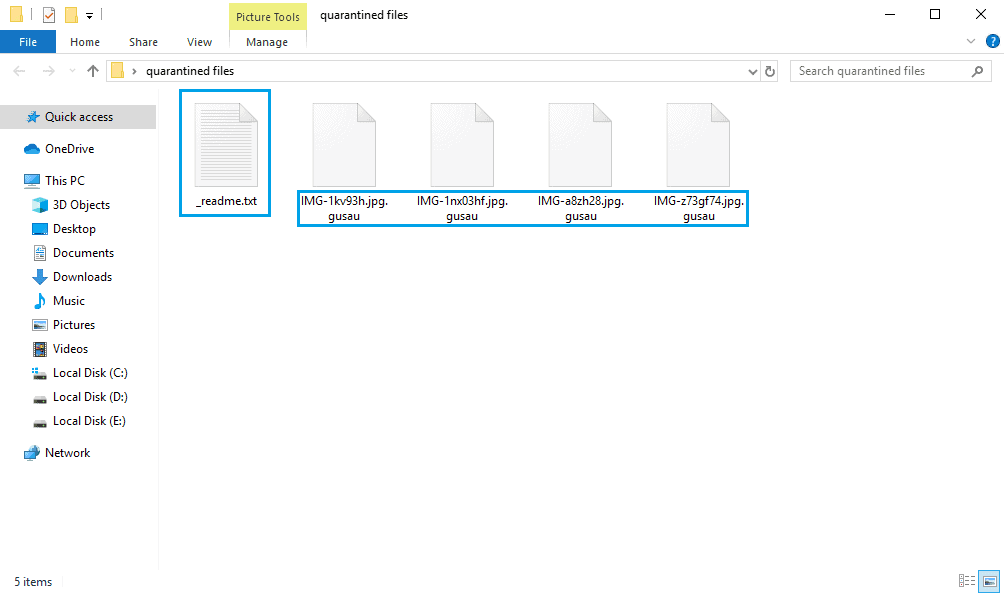
.Gusau Virus – Details
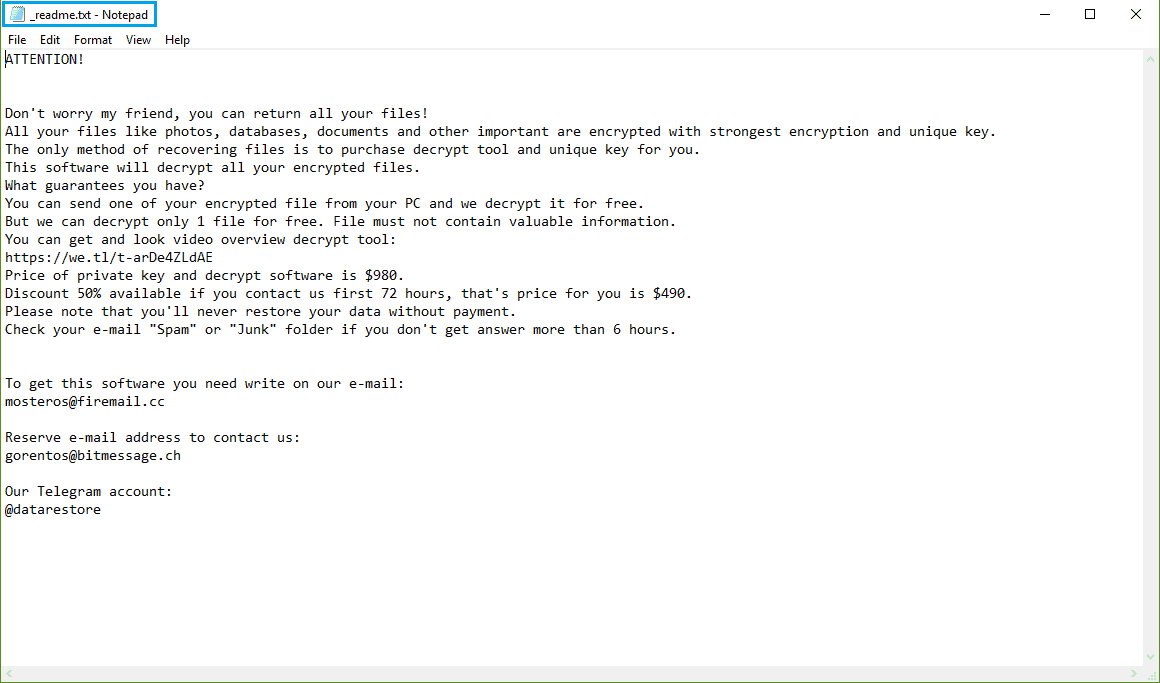
Gusau is a Ransomware based cryptovirus, which is programmed to encrypt the files, stored on a given computer, and to make them inaccessible for the user. Only the criminal who launches the attack has the special code (decryption key) to decrypt your files and no matter what you do, you may not be able to open or use them without that key. Generally, after the encryption has taken place, the criminal leaves a .TXT or .HTML file with a message that provides you with instructions on what you need to do to receive the decryption key for your files. Usually, you are requested to pay a certain amount of money (in Bitcoins) as a ransom for the key (hence, Ransomware). This is a basic, yet highly effective, blackmailing scheme, the only aim of which is to extort money from the unsuspecting web users, whose personal information has been locked down.
If you are reading this page because you have been attacked by Gusau, maybe you’re asking yourself, “Should I pay the ransom?” Or maybe you are looking for alternatives to remove the infection and restore your data by other means. In both cases, we have something for you here – a special guide with detailed removal instructions and a file-recovery section with suggestions on how to potentially restore some of your encrypted information without paying the ransom to the crooks.
The vast majority of contaminations with threats like Gusau, Berosuce or Madek occur via email spam campaigns, which are nothing more than fake emails, structured in a way that would make the victims think that the letters are legitimate. Those emails always ask for some action from the user, such as downloading an attachment or clicking on a link from a contaminated website. Of course, there are many other methods of distribution such as fake ads, cracked software, pirated content, illegal websites, etc. The moment the user interacts with the transmitter, the malware gets activated and begins to operate silently in the background of the system.
Can I recover any encrypted .Gusau file

This is a question that lacks an universal answer which can be given for each case of a cryptovirus infection. Yes, there are some variants of Ransomware, from which the victims have been able to recover the encrypted files, but there are also some that we still do not have the tools to decrypt, unfortunately. That’s why the best you could do is explore the alternatives, remove the infection from the system and give a try to some methods that may eventually help you get back some of the encrypted data when possible.
In case of an infection with Gusau, a full external file backup will be invaluable, but even if you don’t have backup copies of your files, there are still some methods you could try. For instance, you could follow the suggestions in the file-recovery section below, or check our list of free decryptor tools. However, before you give a try to any of the methods, make sure you have removed the Ransomware from your computer. Otherwise, if the harmful code remains active in the system, it may encrypt again everything you manage to recover, including your backup sources.
SUMMARY:
| Name | Gusau |
| Type | Ransomware |
| Danger Level | High (Ransomware is by far the worst threat you can encounter) |
| Symptoms | Very few and unnoticeable ones before the ransom notification comes up. |
| Distribution Method | From fake ads and fake system requests to spam emails and contagious web pages. |
Remove .Gusau Ransomware
1: Preparations
Note: Before you go any further, we advise you to bookmark this page or have it open on a separate device such as your smartphone or another PC. Some of the steps might require you to exit your browser on this PC.
2: Task Manager
Press Ctrl + Shift + Esc to enter the Task Manager. Go to the Tab labeled Processes (Details for Win 8/10). Carefully look through the list of processes that are currently active on you PC.
If any of them seems shady, consumes too much RAM/CPU or has some strange description or no description at all, right-click on it, select Open File Location and delete everything there.

Also, even if you do not delete the files, be sure to stop the process by right-clicking on it and selecting End Process.
3: IP related to Gusau
Go to c:\windows\system32\drivers\etc\hosts. Open the hosts file with notepad.
Find where it says Localhost and take a look below that.

If you see any IP addresses there (below Localhost) send them to us here, in the comments since they might be coming from the Gusau.
[add_forth_banner]
4: Disable Startup programs
Re-open the Start Menu and type msconfig.
Click on the first search result. In the next window, go to the Startup tab. If you are on Win 10, it will send you to the Startup part of the task manager instead, as in the picture:

If you see any sketchy/shady looking entries in the list with an unknown manufacturer or a manufacturer name that looks suspicious as there could be a link between them and Gusau , disable those programs and select OK.
5: Registry Editor
Press Windows key + R and in the resulting window type regedit.
Now, press Ctrl + F and type the name of the virus.
Delete everything that gets found. If you are not sure about whether to delete something, do not hesitate to ask us in the comments. Keep in mind that if you delete the wrong thing, you might cause all sorts of issues to your PC.
6: Deleting potentially malicious data – Gusau
Type each of the following locations in the Windows search box and hit enter to open the locations:
%AppData%
%LocalAppData%
%ProgramData%
%WinDir%
%Temp%
Delete everything you see in Temp linked to Gusau Ransomware. About the other folders, sort their contents by date and delete only the most recent entries. As always, if you are not sure about something, write to us in the comment section.
7: Gusau Decryption
The previous steps were all aimed at removing the Gusau Ransomware from your PC. However, in order to regain access to your files, you will also need to decrypt them or restore them. For that, we have a separate article with detailed instructions on what you have to do in order to unlock your data. Here is a link to that guide.
